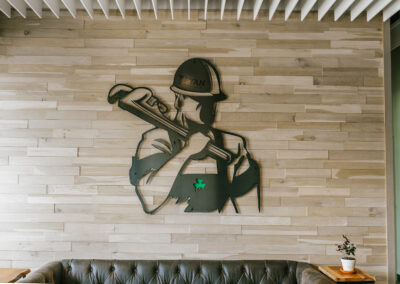Analog phone lines will soon be a thing of the past. Traditional phone lines are being phased out in favor of digital lines and wireless communications. As fewer households and businesses use traditional lines, the economics of maintaining the copper lines no longer make the most sense for telephone companies (telcos). In fact, the
Federal Communications Commission (FCC) Technological Advisory Council (TAC) expects the service to be phased out by 2018.
What does that mean for your facility? Most
fire alarm control panels (FACP) currently use two traditional phone lines to meet an older requirement of the
National Fire Protection Association (NFPA) 72, National Fire Alarm and Signaling Code. With phone lines going away, changes will need to be made. Newer versions of the NFPA 72 code allow for other means of communications.
Digital Phone Lines or Voice Over IP (VoIP) Connections
Functions just like a traditional phone line but uses the Internet to transmit and receive digital signals and convert them to audio (or voice). This will be the primary offering of the telcos. Cable providers and other communication companies also provide VoIP options. Many facilities are already using VoIP as their primary means of telephone communications whether or not their FACPs are currently connected to them. VoIP is the technology used if phone services are through a cable television provider or AT&T U‑verse®, Vonage®, or other such service. If a facility has a newer FACP, the switchover should not pose a great challenge; however, older FACPs may not be compatible with the faster digital phone lines and newer communication protocols. One advantage of older alarm systems when adding a new DAC dialer is that the dialer may upgrade your system from a “dumb” conventional system to a “smart” Contact ID addressable ID system. An addressable system can provide the exact location of the sensor that is in alarm or failure, which can aid the fire department in responding quickly to a particular incident.
Internet Protocol (IP) Communications
Provide IP connectivity over your facility’s network Internet connection (e.g., LAN, WAN, or cable modem). Unlike VoIP, this connection does not function like a traditional phone line in that there is no audio conversion happening. It is purely two computers communicating over the internet. This will require an external digital fire alarm communicator with an Ethernet port. Again, like VoIP, older FACPs may not be compatible and may require an upgrade.
Radio Communications
Require a radio transmitter and an external roof‑mounted antenna. Some local fire marshals or the authority having jurisdiction (AHJ) prefer either the traditional phone lines or radio communications. Because of the expense involved, radio communication is typically not the best option when replacing traditional lines, unless mandated by your local fire marshal or AHJ.
Cellular Communications
Is one of the primary replacements for traditional phone lines. Everyone is already familiar with cell phones, but making the switch for a facility will not require a trip to your local Verizon, AT&T, or Sprint store. In fact, expect a cost savings over your traditional phones lines when installing a cell dialer. The additional (minimal) expense will be included as part of an annual monitoring contract. Cellular communication is considered more reliable than traditional phone lines since is it less likely to fail due to weather conditions. And, since a battery backup is required, there is no need to worry about power failures cutting communications. Cellular dialers are also required by NFPA 72 2010 to automatically test the connection every five minutes (or every 60 minutes in recent updates), so they can be used as a single communications link while traditional units are only required to perform a test once every 24 hours.
When switching away from traditional phones lines, most facilities will opt for a combination of an IP (or VoIP) and a cellular dialer to provide their system with redundant lines of communications.
To recap, if a FACP is old it may not be compatible with the new required communication protocols. Yes, this does mean an upgrade is required, but there are many benefits that will offset the cost of an upgrade. A major one, in reference to DAC dialers, is the ability use an addressable ID system. All new FACP will be Contact ID systems. Additionally, newer panels can reduce maintenance and testing expenses. They can pinpoint a faulty sensor and perform automatic sensitivity testing. Newer panels can also mean fewer expensive false alarms. The panels must also meet the current UL requirements, which meet the latest industry standards.
There are a lot of considerations on how to handle the new communication changes taking place—from deciding on the right equipment to meeting local fire marshal or AHJ requirements. Not sure what you need to make the switch? Ryan Fireprotection will make it easy by visiting your facility and evaluating your current system to help determine your best path forward.

